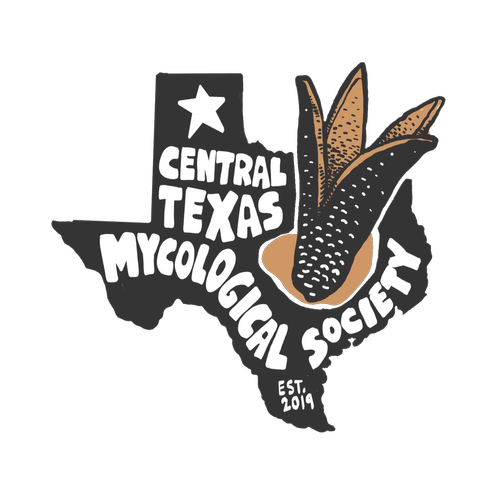





The September mushroom of the month is not a fun one: Kretzschmaria deusta commonly known as Brittle cinder. You may have heard about it recently in the news, as one of Austin’s beloved pecan trees Flo, a centurion living on the banks of Barton Springs pool, has been diagnosed with this deadly fungus.
🙌 to Braden for naming that mushroom correctly and becoming the 1,188th member of Central Texas Mycology!
what is it?
Brittle cinder fungus, or Kretzschmaria deusta, is a fungal pathogen that causes breakage in seemingly healthy trees. The fungus appears around the base of trees as a crust-like fruiting body that has wavy edges. When the fungus is young, it will be grey with white margins. As it ages, it will turn black and resemble burnt bark.
Where does it live?
Brittle cinder fungus is native to the northern hemisphere, also found in Argentina, South Africa and Australia. It prefers deciduous hardwoods like oak, maple, and pecan. You may have heard about it recently in the news, as one of Austin’s beloved pecan trees Flo, a centurion living on the banks of Barton Springs pool, has been diagnosed with this deadly fungus.
what happens to infected trees?
Once a tree has become infected with Brittle cinder fungus the outcome is typically death. This is because the infection doesn’t become obvious until the fruiting body appears on the bark, and at this point it has digested much of the interior of the tree. This can be dangerous as it makes the tree unstable and limbs are likely to break and fall at any time.
Are there any benefits?
Like everything in nature, there are positive and negative aspects to Brittle Cinder fungus. While it attacks otherwise healthy trees, the fungus digests the wood like any white rot fungi, even after the tree has died, returning nutrients to the soil.

